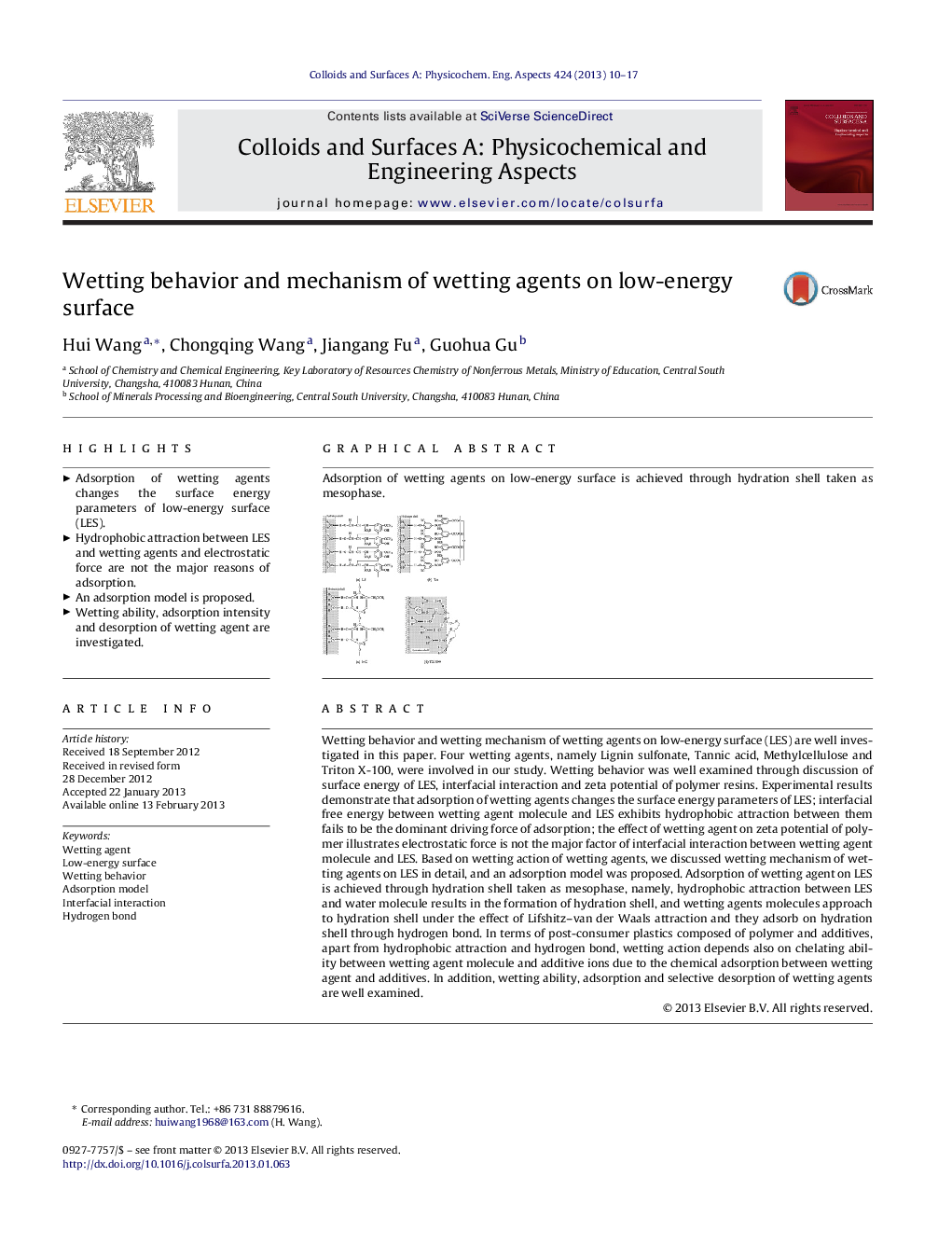| Article ID | Journal | Published Year | Pages | File Type |
|---|---|---|---|---|
| 593744 | Colloids and Surfaces A: Physicochemical and Engineering Aspects | 2013 | 8 Pages |
Wetting behavior and wetting mechanism of wetting agents on low-energy surface (LES) are well investigated in this paper. Four wetting agents, namely Lignin sulfonate, Tannic acid, Methylcellulose and Triton X-100, were involved in our study. Wetting behavior was well examined through discussion of surface energy of LES, interfacial interaction and zeta potential of polymer resins. Experimental results demonstrate that adsorption of wetting agents changes the surface energy parameters of LES; interfacial free energy between wetting agent molecule and LES exhibits hydrophobic attraction between them fails to be the dominant driving force of adsorption; the effect of wetting agent on zeta potential of polymer illustrates electrostatic force is not the major factor of interfacial interaction between wetting agent molecule and LES. Based on wetting action of wetting agents, we discussed wetting mechanism of wetting agents on LES in detail, and an adsorption model was proposed. Adsorption of wetting agent on LES is achieved through hydration shell taken as mesophase, namely, hydrophobic attraction between LES and water molecule results in the formation of hydration shell, and wetting agents molecules approach to hydration shell under the effect of Lifshitz–van der Waals attraction and they adsorb on hydration shell through hydrogen bond. In terms of post-consumer plastics composed of polymer and additives, apart from hydrophobic attraction and hydrogen bond, wetting action depends also on chelating ability between wetting agent molecule and additive ions due to the chemical adsorption between wetting agent and additives. In addition, wetting ability, adsorption and selective desorption of wetting agents are well examined.
Graphical abstractAdsorption of wetting agents on low-energy surface is achieved through hydration shell taken as mesophase.Figure optionsDownload full-size imageDownload as PowerPoint slideHighlights► Adsorption of wetting agents changes the surface energy parameters of low-energy surface (LES). ► Hydrophobic attraction between LES and wetting agents and electrostatic force are not the major reasons of adsorption. ► An adsorption model is proposed. ► Wetting ability, adsorption intensity and desorption of wetting agent are investigated.
